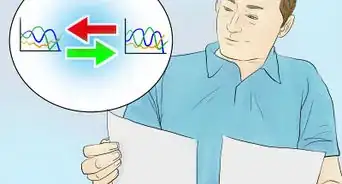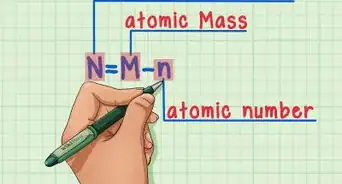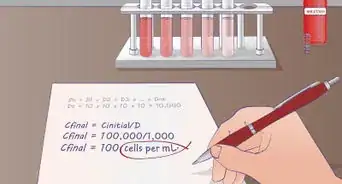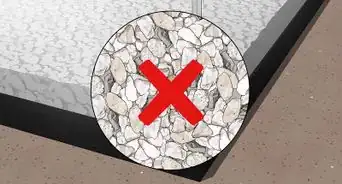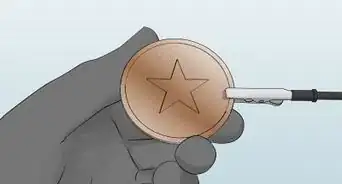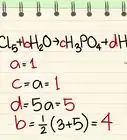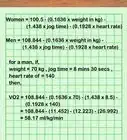wikiHow is a “wiki,” similar to Wikipedia, which means that many of our articles are co-written by multiple authors. To create this article, 11 people, some anonymous, worked to edit and improve it over time.
wikiHow marks an article as reader-approved once it receives enough positive feedback. In this case, 91% of readers who voted found the article helpful, earning it our reader-approved status.
This article has been viewed 31,708 times.
Learn more...
Pharmacists and chemists come across many naturally occurring organic mixtures and mixtures of chemical reactions in their work. As such, a High Performance Liquid Chromatography (HPLC) system is one of the most essential instruments for any lab. An HPLC instrument allows you to separate and analyze these mixtures (quantitatively and qualitatively). In this type of column chromatography, the particle size of the stationary phase is small enough that it makes it difficult for the solvent to pass through it; to overcome that, a high pressure of 3000-5000 psi is applied. It is the most sensitive, efficient and accurate technique.
Steps
-
1Follow the rules and regulations and wear your apron.
- Clean the HPLC.
- Switch it on and wait for it to get started.
- Prepare the instrument for analysis.
- Keep the solvent/solvents in the mobile phase in solvent reservoir or solvent tray. Solvent is used to separate the components of the mixture. In modern instruments, the mixture of solvents can be used as mobile phase which is called gradient elution. Elution is the separation into components.
- Use methanol-water or chloroform-heptane etc as your solvent.
-
2Select the types of HPLC based on the relative polarity of the phases:
- Normal Phase: Use a comparative polar stationary phase than mobile phase if doing normal phase HPLC.
- Reverse Phase HPLC: Use a less polar stationary phase as compared to mobile phase. Generally reverse phase is used.
Advertisement -
3Feed the data into the system or program the HPLC.
- Assign the number to the solvents when you are opting for gradient elution.
- Specify the flow rate.
- Regulate the pressure of the pump.
-
4Analyse your sample.
- Add your sample in the injector system. This is the mechanism which introduces the sample (the mixture to be separated) to the system.
- Load the stationary phase in the column.
- Start the HPLC by clicking on the start button on the screen of computer attached to it.
- Wait for some time for the separation of the mixture into components. The retention time is the time taken by solvent to separate the components, which is equal to the time when you enter the mixture in the column to when it is detected/analysed.
-
5Develop your components. Wait for your mixture to be separated into its components. This is called development, when the sample contents will be detected by detector.
-
6Observe the result. Look at the separation of components detected and recorded on graph. There will be various peaks corresponding to the components and their concentration.
-
7Apply your findings to your work. There are many uses of HPLC in pharmacy, chemistry and industries like food production. Some of the significant applications are following.
- Use it for qualitative analysis by comparing retention time observed under identical conditions.
- Make use of HPLC for quantitative analysis, like assessing the concentration of components.
- Analyse lipid separation.
- Use it for answers in forensic work on criminal/poison cases.
Community Q&A
-
QuestionWhy is so much high pressure applied?
 Mohsin257Community AnswerBecause the particle size of the stationary phase is small, and it's difficult for the mobile phase to pass through it. To overcome that, high pressure is applied.
Mohsin257Community AnswerBecause the particle size of the stationary phase is small, and it's difficult for the mobile phase to pass through it. To overcome that, high pressure is applied.
Warnings
- Be careful while putting the data into the system; little mistakes will totally alter the result.⧼thumbs_response⧽
- After each analysis, run methanol as the mobile phase to wash and rinse the HPLC before another analysis.⧼thumbs_response⧽
- In liquid-liquid HPLC, the stationary phase and mobile phase shouldn't be miscible.⧼thumbs_response⧽
- Before leaving the lab, make sure you switch the HPLC off.⧼thumbs_response⧽
Things You'll Need
- Sample (natural organic extract/mixture)
- Mobile phase
- Stationary phase
- HPLC instrument
- Methanol
-Step-1.webp)
-Step-2.webp)
-Step-3.webp)
-Step-4.webp)
-Step-5.webp)
-Step-6.webp)
-Step-7.webp)






